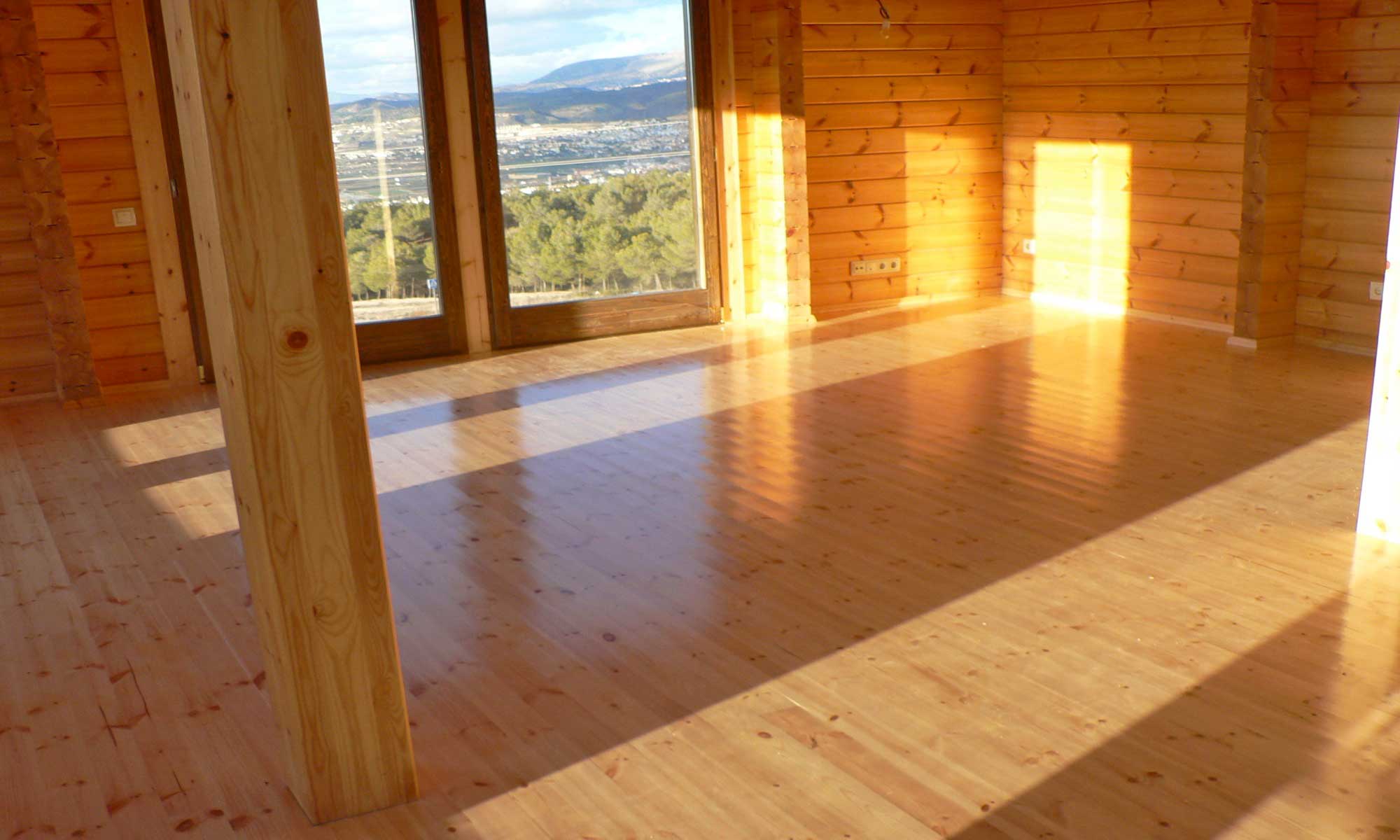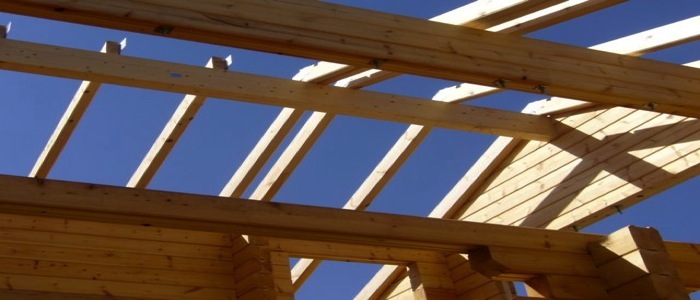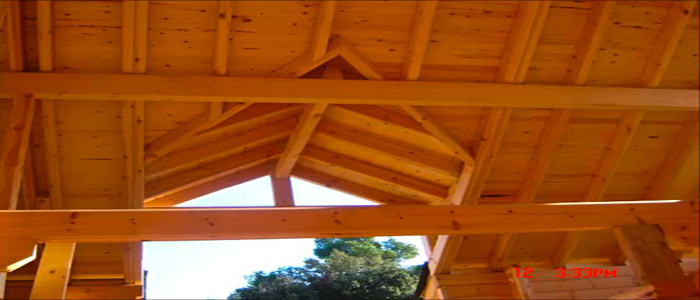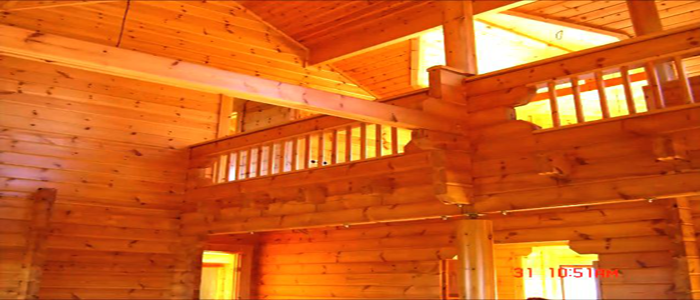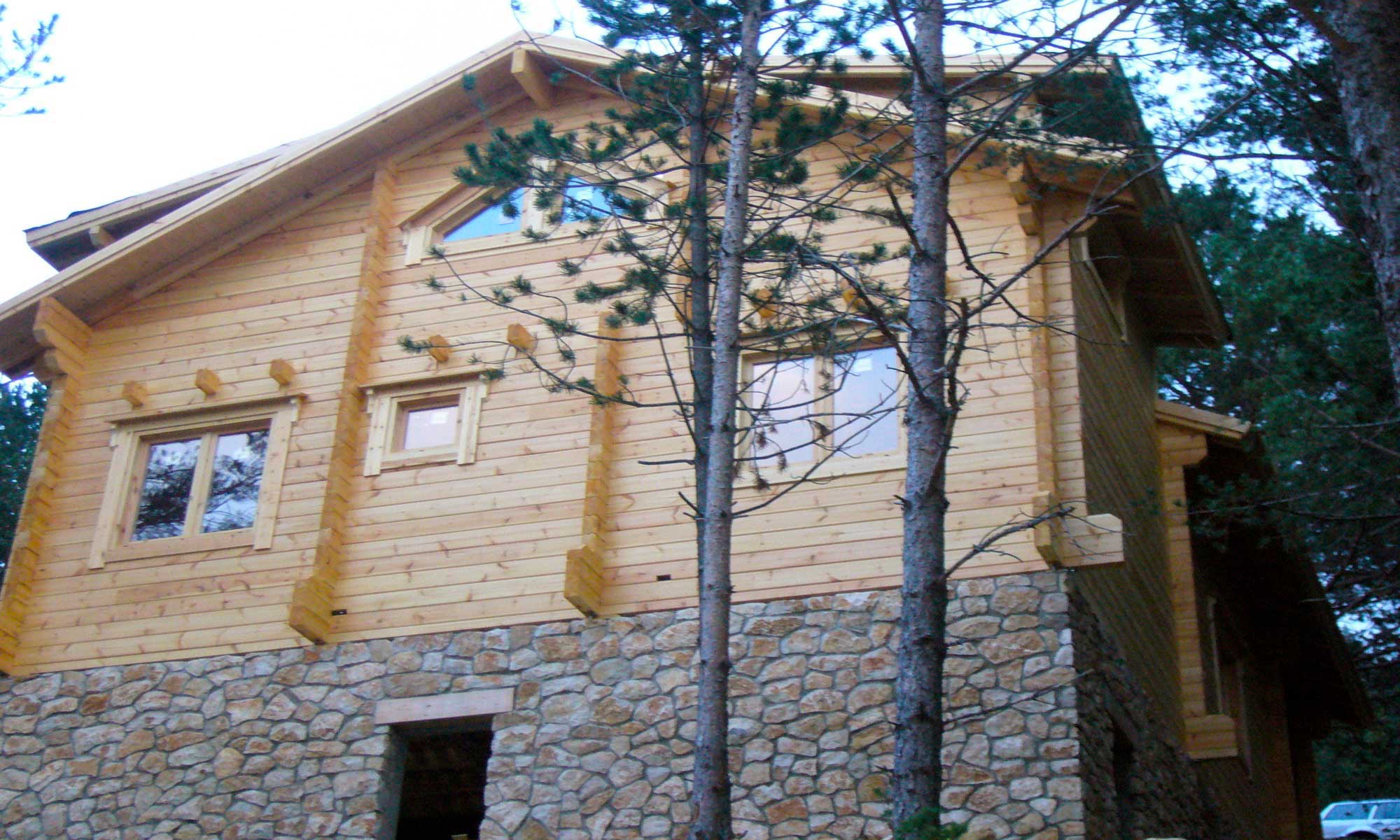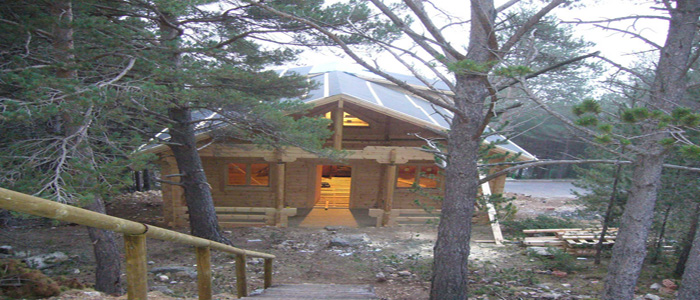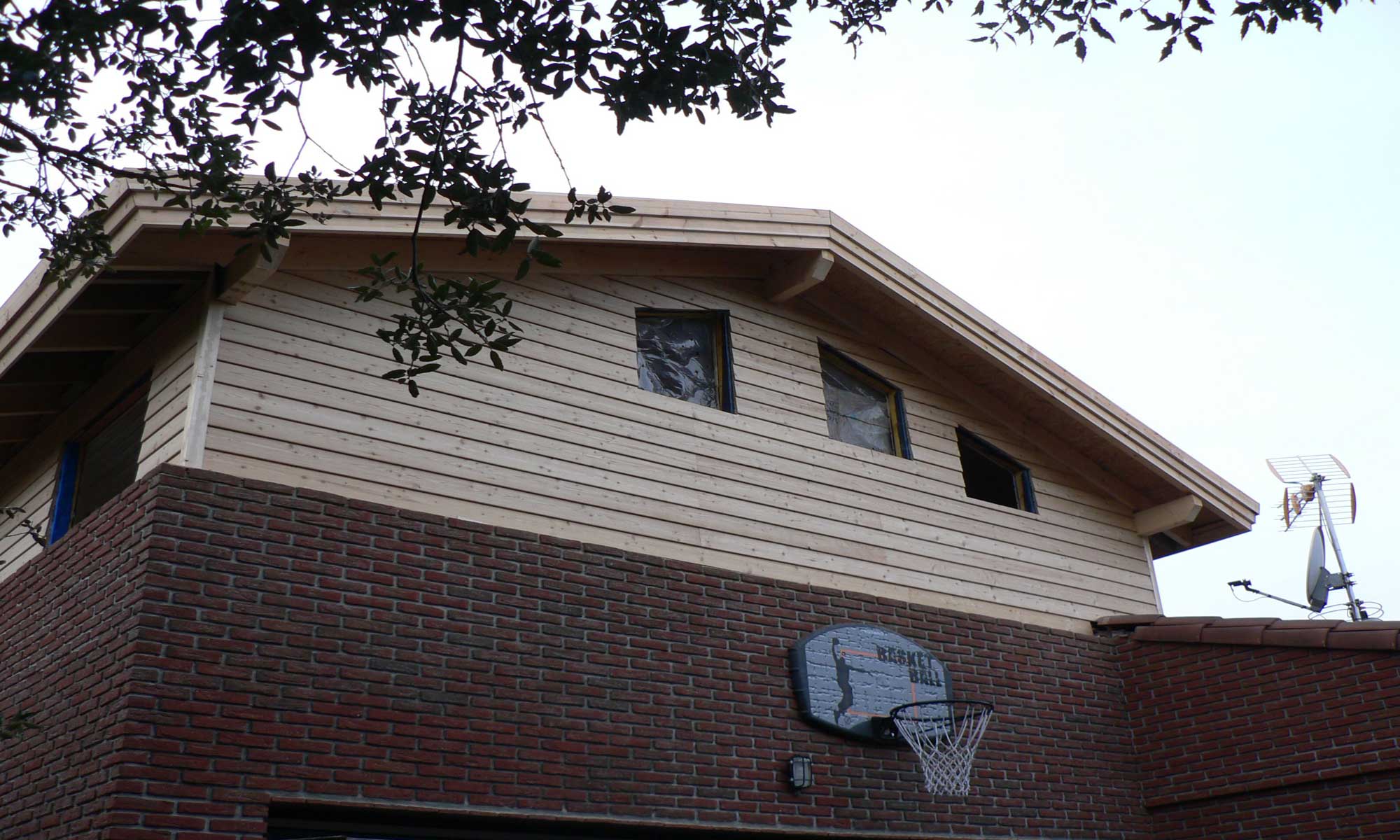THINGS YOU SHOULD KNOW ABOUT THE WOOD USED IN THE CONSTRUCTION OF HOUSES
When talking about the advantages of wood as a rule they are ignored; To illustrate a bit about the subject we will say that:
In the United States they are dedicated to the cultivation of yellow pine, the wood most used in the manufacture of houses, around 73 million hectares, which is equivalent to 1.45 times the size of all of Spain. The main characteristics of this wood are its exceptional solidity and its resistance to wear.
The kiln drying of the wood guarantees its dimensional stability. This drying leaves the wood with a maximum moisture content of less than 19%. This percentage of humidity is indicated in the pieces of wood preceded by the initials KD, thus “KD 15” means that the maximum moisture content is 15%.
The deposits of metallic and petroleum minerals are finite; when they are exhausted, they can not be renewed. On the other hand, wood is a renewable product and for its growth it only needs water and sun, which makes it a potentially inexhaustible material.
Wood is the best insulator of all building materials thanks to the millions of tiny air cells that are in its cellular structure and that form an insulating barrier against cold and heat. As an insulator, wood is 15 times more effective than cement and 400 times more efficient than steel and 1,770 times more efficient than aluminum.
For this reason, houses built with wood consume much less energy in heating and air conditioning, thus helping to conserve fossil fuel deposits and consequently the environment. In addition, the wood is reusable, recyclable and biodegradable.
For those who believe that wood construction is a threat to forests, we must say that in some countries like the United States, every citizen consumes the equivalent of a 30.48 m tree annually. of height and 457 mm. in diameter for the production of wood and paper products, but 6 million trees are planted daily, that is, nine trees per year per citizen, which is why there are more trees than 70 years ago and that a third of the country’s surface is covered with forests. Undoubtedly, this growth of forests is due to the use of wood for the production of various products.
Forests provide important benefits to the environment by stabilizing the soil, protecting from the wind, providing shade and habitat for fauna and flora, as well as better quality air and water.
In addition, the forests are oxygen factories and greenhouse filters. A kilogram of a young and strong forest tree removes 1.46 kilos of carbon dioxide from the atmosphere and replaces it with 1 kg of oxygen. Carbon dioxide generates 50% of the greenhouse gases that trap the sun’s rays.
An old forest produces the opposite effect, eliminates oxygen and emits carbon dioxide, which leaves in evidence the mistake made by those who think that trees should never be cut under any pretext.
On average, a house made of wood stores more than 12,700 kg of carbon, but if the same house were made with metal products and conventional masonry, it would release 136,000 kg of carbon into the atmosphere.
As you can see, wood is a material that not only has technical advantages when compared to other construction materials, but also is an ecological option that must be taken into account when deciding to buy your home.
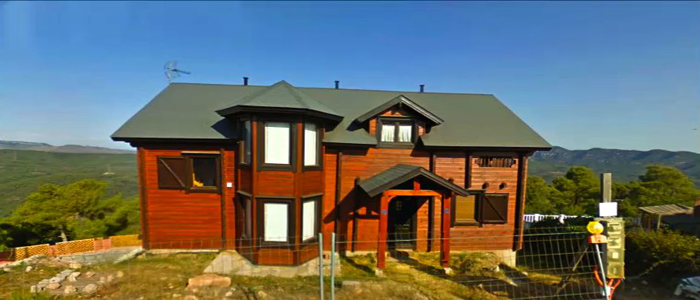
Energy saving in wooden houses
Visiting any home factory you can verify that, although it seems strange, building in a factory is easier and cheaper. The difficult thing is to build the factory itself and then apply the construction techniques to an industrial process.
Once this is achieved, we observe the following:
1º The double quality control at the end of each task, by the operator and by the controller, makes the process efficient by reducing the repair parts,
2º As repeated tasks, nonconforming parts can be processed to avoid new errors,
3º Adverse weather conditions do not influence production,
4º The working conditions for senior officers, apprentices and handicapped are the best.
5º These better working conditions and the hiring without pieces cut drastically the labor accidents,
6º The use of transport and material is optimal. Full trucks arrive at a factory and there is very little extra material. The specific containers allow the recycling of the little rubble that is generated.
Leaving aside the best quality of an industrial product, the suffering and risk of construction workers, the exploitation of marginalized labor sectors and material resources, we have estimated:
In terms of efficiency, the approximate ratio is 9 hours of a factory operator for 30 hours of an operator in a traditional work, per square meter of single-family housing.
In terms of energy, the industrial construction consumes approximately 6 times less energy than the conventional one for the same work unit.
Energy savings by isolating well
Wood is the ONLY material that is resistant and insulating at the same time
Conductivity is a quality of building materials that is often linked to density, compactness and strength. Brick, concrete and steel are the materials that almost always make up the enclosure of a house. But its thermal conductivity is, respectively, 12, 15 and 400 times greater than that of wood. Wood is the ONLY material that is resistant and insulating at the same time.
The Basic Standard of Building, Thermal Conditions in Buildings, NBE-CT-79, defines the global coefficient of thermal transmission of a building Kg.
Based on the conductivity of the materials of the enclosure, floor, roof, volume and shape of the building. building. It does not take into account (since the constructive solution is very difficult) the thermal bridges in the joints of the façade with the ground and with the roof.
So the cold outside passes through the façade and enters the interior thanks to the conductivity of the reinforced concrete joists. Only the expense in heating prevents this cold from crossing the entire building.
The condensation on the baseboard in the partitions facing north shows that the cold has already penetrated the wall and the chamber.
The insulation of the chamber does not prevent this thermal bridge because it starts just above the floor slab and ends just below the roof slab.
The relative humidity of the air can be maintained at a level as a function of temperature.
At more temperature, higher relative humidity is possible. When the temperature drops, the air is released from the excess moisture, producing condensation.
This condensation manifests itself in the coldest areas. It is, therefore, the best detector of thermal bridges.
Most of the houses have aluminum exterior carpentry. This material is one of the most conductive (1,700 times more than wood). Therefore, they usually have condensations on the inside of the window.
In addition, the sliding window (less hermetic) and the minimum insulating glass (6 mm) are used extensively.
The thermal bridges and the bad design of the exterior carpentry are the two main deficiencies of the insulation.
The architects that do not take into account this waste of energy, are transferring to their client the expense, and to society, the most serious ecological problem that we have today.
MYTHS AND LEGENDS ON WOODEN CONSTRUCTIONS
In Russia, France and many other European countries have passed to these building systems in a majority way. If we walk through the towns of the Iberian Peninsula, we will find historical places, squares, churches and houses with wooden structures of hundreds of years.
Although there are approximately 100,000 wooden houses built in Spain in the last 25 years, we persist in the same myths.
FIRST MYTH: THE STORY OF THE THREE PIGS
All those who have commercialized or defended this type of structure we have seen, on many occasions, forced to listen to the story of the house of the three little pigs and the big bad wolf as if that were an argument with scientific rigor.
Interestingly, everyone who says it believes to have a very original occurrence.
However, nobody would say that one of the richest people in the world, like Bill Gates, lives in a wooden house ..
The argument followed would be that this applies to North America but not to Spain.
It turns out that here, several of the main managers and executives of large companies have a wooden house.
SECOND MYTH AND THIRD MYTH: PREFABRICATED HOUSES
In many cases the expression of prefabricated house is used pejoratively. In itself, the denomination is correct.
According to the Dictionary of the Royal Academy, the meaning is: said of a house or another construction is one whose essential parts are already sent manufactured to the place of its location, where you only have to attach and fix them.
In no case does it refer to poor quality or cheap.
Curiously, in everything that we acquire in a suritaria way or in those that represent a considerable investment, we are worried that it has a guarantee and that it passes quality controls.
No one can think of buying a car assembled in a home workshop and a company would not buy a clone computer to store their databases.
In the case of buying a house, the opposite happens.
It is one of the main investments of a family and many times the safety of a factory quality control is left out, the work by specifically qualified personnel and the guarantee of companies with several years of operation and experience.
On the contrary, opting for a work where the work staff professionalism is supposed, quality control, in many cases, is obvious and the guarantee is lost with the works.
FOURTH MYTH: TERMITAS
I have no news that anyone knows someone who has a friend who built a wooden house less than 25 years ago and has termite problems.
In theory, the risk exists, such as aluminosis, iron oxide, poor mixtures of cement and sand, undersized structures, etc.
Everything is possible.
It is possible that a first-class car fails on the day of its purchase or that a chocolate is not in optimal condition despite not having reached its expiration date.
The case is that a first-line company, which has passed the external quality inspections, that acquires its raw material in approved centers at EU level and has been operating in the Spanish market for many years, has a very low probability of having a problem of this type.
Every day we see huge wooden structures in hypermarkets, telephone poles, railway sleepers, wooden facades, furniture, doors and thousands of wooden items and we never see a termite.
However, every day we see rusted nails and irons or facades with dampness and nobody thinks to think that this could be avoided.
FIFTH MYTH: ARE VERY HOT
One of the great advantages of wooden houses is their high level of thermal and acoustic insulation.
In many films we see that in the coldest places, people live in wooden houses. Therefore, we relate this type of housing with heat.
It is true that in low-temperature climates the houses are warm. But it is also true that in the hottest areas of North America you also live in wooden houses.
This is because, as in an oven or refrigerator, it depends on the heat or cold that is generated inside so that the house maintains that temperature, almost independently of the external conditions.
CONCLUSIONS
I do not intend for this article to eliminate forever all the misgivings and doubts that people have about wooden houses. It is good to have doubts, ask questions, investigate, compare some companies and others.
Between some systems and others. Between some materials and others. One of the great advantages of wooden houses in Spain, is that having companies that make their way in such a competitive market are more effective and demanding themselves.
Serious companies of wooden houses in Spain have created the Association of Wooden House Manufacturers to promote knowledge of these building systems.
But the funny thing is that to be a member is not enough to be a manufacturer or builder, you also have to be good at what is done and this is determined by a technical inspection endorsed by a specialized and independent agency such as AITIM (Asociación de Investigación de la Wood and Cork).
To make matters worse, they have created a customer service office for all those who live or want to live in a wooden house. You do not have to be a client of a company of the AFCCM, you only need to opt for this type of housing. In this way, at no cost, you will receive information on maintenance tips, advice on insurance and mortgages, etc.
For some years it will be necessary for the market to purge those companies that give such a bad image to wooden houses. In this way the myths will be reserved for children’s stories will be imposed reality: living in a wooden house is an alternative as valid as any other.
Kyoto Protocol
Wooden houses reduce CO2 emissions
On December 11, 1997, the Spanish government adhered to the Kyoto Protocol committing itself to reduce emissions of greenhouse gases by 8 percent: (Carbon dioxide (CO2), Methane (CH4), Nitrous oxide (N2O), Hydrofluorocarbons (HFC), Perfluorocarbons (PFC), Sulfur hexafluoride (SF6))
In relation to the measurements of the year 1990, in the period between 2008 and 2012.
Article 3. ap. 2. Each of the Parties included in Annex I must be able to demonstrate by 2005 a concrete step forward in fulfilling their commitments under this Protocol.
The productive processes of the companies are the cause of most of the emissions, but the business initiative also produces the biggest initiatives to reduce them.
The number of companies, especially European, that have adhered to the commitment grows exponentially.
The dual objective of reducing both the dependence and consumption of fossil fuels, and the emission of gases into the atmosphere, in the field of construction companies, has four pillars to save energy:
1.- When obtaining the construction materials,
2.- When building,
3.- By isolating the construction well,
4.- When using alternative energies.
Construction materials
Wood is the material that consumes less energy to obtain it. The rain and the sun are the architects of the growth of the trees. It is the only insulating and resistant construction material at the same time.
Build with wood adds to its advantages of comfort and isolation, that of being the material that saves more energy in the set of processes: procurement, transport, processing and commissioning.
In addition to its capacity as a thermal, acoustic and electrical insulator, the use of wood in a structure reduces between 8 and 13 times the energy required compared to an equivalent steel or reinforced concrete.
Also, its great capacity to absorb impact loads and its ductile joints make it ideal for building in seismic areas and on expansive or unstable ground.
As a source of wealth, the producing countries increase the forested area by an approximate ratio of 10 to 7, that is, 10 trees are planted for every 7 cuttings. The forest with young trees is a greenhouse gas sink.
A young tree absorbs 1.47 kg of carbon dioxide (CO2) per kg of its own weight, converting it into oxygen. The CO2 represents 50 percent of the total of the gases responsible for the greenhouse effect.
The wood used is only purchased from companies that comply with the FSC Certification, especially from Germany, Austria, Finland and Canada.
The protective coatings and insulations applied in the factory will give the wood the required durability. Reasons that justify an increasing demand for prefabricated houses For its price, cheaper than conventional construction.
For its good occupational benefits, especially in terms of thermal and acoustic insulation, which translates into energy savings and more comfort.
For the quality of its finishes, direct consequence of the best quality control that is possible to obtain in a factory where each finished work is immediately supervised by the person in charge of the section, and also by the specialization of the workforce and by the best conditions of work that the facilities of a factory offer in comparison with those of a traditional work.
Because from the moment you choose a manufactured house model and all its details, you know exactly the final price of the house and the delivery date, without any margin to price variations or termination delays.
For the short time it takes to build a house.
This is due to the fact that in the manufacture of a house it is possible to combine the production works of the different elements that compose it (floors, walls, enclosures, roofs, sanitation networks, etc.), while in the traditional construction, the process it must necessarily be sequential (the structure can not be made until the foundation is made, etc.) and also, the construction with cement requires the necessary delays of its setting.
This saving of time means for the buyer saving of rent and / or more time of possession and enjoyment of the house.
For its contribution to the environment, both for the energy savings achieved in the daily use of a manufactured house, and during its manufacturing process.
To this we must add the stimulus that represents the greater use of wood for the growth of forest masses which are ultimately the great sinks of the gases that produce the greenhouse effect, especially CO2.
Because wood is a renewable material, its growth depends on an inexhaustible source, the sun, while the production of cement, steel, aluminum, etc., consumes large amounts of fossil energy, and therefore finite, such as Petroleum.
Because of its better relationship between the useful surface and the built surface.
This is due to the lower thickness of the perimeter walls of manufactured houses, as they do not need air chambers, compared to those of traditional houses that do need them, which represents a better use of the useful area of around 6 per cent. hundred.
Because the ideal of a single-family home is that its size and location correspond at all times with the family needs of each era, the same as with the car.
A manufactured home is easy to replace with a larger or smaller one without having to change the address, depending on the needs and as long as the size of the plot allows it.
What until now seemed unthinkable is normal in Canada, the United States, etc. We all know that the surface needs of homes are equidistant due to age.
The same need for space has a couple of older people who have left their children in the family home, a couple of young people who begin to live independently of their parents.
Space needs increase with age until reaching a maximum point from which they begin to decrease as children leave the house.
Save on using alternative energies
The energy demand of a dwelling with medium isolation and in a continental climate is approximately: 90 watts / m2 for heating, 60 watts / m2 for colds and 15 watts / person / hour, for hot water.
The average proportion of annual energy demand of these three concepts would be 10-5-1.
When thinking about alternative energies, we almost always remember the solar, in its two forms: thermal and photovoltaic and wind power for electrical production.
There are many other ways to obtain energy: biomass, tides, hydrogen, combined, etc. But the most common are solar and wind.
Saving the profitable that can be the electrical production by these means (the legislation allows its incorporation to the network at a price 6 times superior to the one of the tariff), to the house the thermal solar only serves to him.
But this only solves the tenth part of the demand and in spite of that it needs conventional electrical support. When more energy is lacking it is in winter and winter solar radiation is scarce and short-lived.
The tests carried out on the houses in operation have shown that geothermal energy is the most efficient and constant.
The temperature below the ground is always between 15 and 19 ºC. Bringing this temperature to a specific heat pump, which produces the average thermal salt of 3ºC and converting it to 20ºC, is, for logical reasoning, the cheapest way of conditioning a home.
If we add that the heating of the sanitary water in the process of the heat pump is almost free, we have resolved, with a consumption 4 times less than the conventional, the energy demand of our home.
Summary
Recalling the four pillars of savings, we have the first (the use of wood as a construction material) and the second (the process of industrial construction) produce a social benefit; the savings is for the community.
And the third (the good isolation) and the fourth (the use of alternative energies) produce direct and individual savings.
But the application of a single of them would be sufficient to fulfill the commitment acquired in Kyoto.
The members of the Association of Manufacturers and Builders of Houses of Wood we make of the houses being based on these two, three or four pillars of the energy saving.
Fortunately, the growing knowledge and recognition of wooden houses is collaborating to achieve the double dream of polluting less and spending less currencies when buying oil.
We also know that this dream must be realized at a cost that compensates. When saving amortization is 4 years, it is very difficult to encourage spending.
The sustainable one begins with our own budget.
From the beginning, we are building houses that are based on these four pillars, at an affordable cost.
The demand for energy in our homes, collectively and individually, is the least possible, adding to the cleaning of the air, saving the user in the acquisition and maintenance of the home.
WOOD IN DEVELOPMENT AND HEALTH
The color, texture and environment of a room influence our behavior, that’s why we react differently depending on the experience that decorative elements and objects in a room provide.
Although an empty room covered with steel panels induces depressive and hostile moods, a wood paneled environment provides us with moods that reduce the feeling of depression.
In this sense, the environments in which wood elements are found are perceived as natural, relaxing and tranquil spaces.
Advantages of wood for health and growth
In another order of things, physical activity is fundamental for the development of children.
During the phase in which we crawl and learn to walk, most of the time the child is in direct contact with the ground, which means that a part of the body heat is transmitted to the material, with the consequent loss of heat in the extremities .
Wood, being a material with low thermal coefficient, does not absorb as much heat as other materials would.
In addition, in pre-adolescence and adolescence, physical activity becomes important in the development and strength of muscles and bones.
Several studies, among which stands out one made with drawers on a wooden floor on the simple physical activity of jumping, show that performing regular jumping exercises strengthens the bones of the lower extremities, preventing future bone breakage due to osteoporosis.
In addition, a significant decrease in the skin temperature can cause a greater chance of suffering a cold if the contact with the cold material is prolonged and if the temperature at which the skin reaches suddenly changes from a comfort situation to a cold one, For example, walk barefoot on the ground for a long time.
Another factor that determines the health of an environment is its acoustic management.
The interior space with the presence of wood generates a controlled and improved reverberation time compared to that which would present that same space without wood.
The reverberation time is a parameter that indicates how long a sound remains in the environment.
If it is reduced, the intelligibility of the speaker is improved because his words do not resonate and are better understood by the recipients of the message, and the presence of echoes and noises is reduced.
This characteristic of wood acquires relevance in the case of the classrooms of a school.
In this type of environment, the noise of the classes and the corridors means that children do not understand the teacher’s explanation well and remain more distracted reducing the learning performance.
Classroom noise becomes even more important when children are hard of hearing, need less noise pollution to better understand words.
Wood can contribute to creating more efficient environments in spaces aimed at school education.
Noise and sounds influence our behavior and mood: they can be annoying and can even irritate us and cause stress and other discomfort.
If it is important to remain in an environment without annoying noises, it is even more so when the activity we are doing is rest and sleep.
During growth, one of the habits that most influence the emotional well-being of children is the dream.
Point and continuous sounds at various frequencies can make you uncomfortable during sleep.
The presence of wood can greatly improve the reverberation time in children’s bedrooms.
